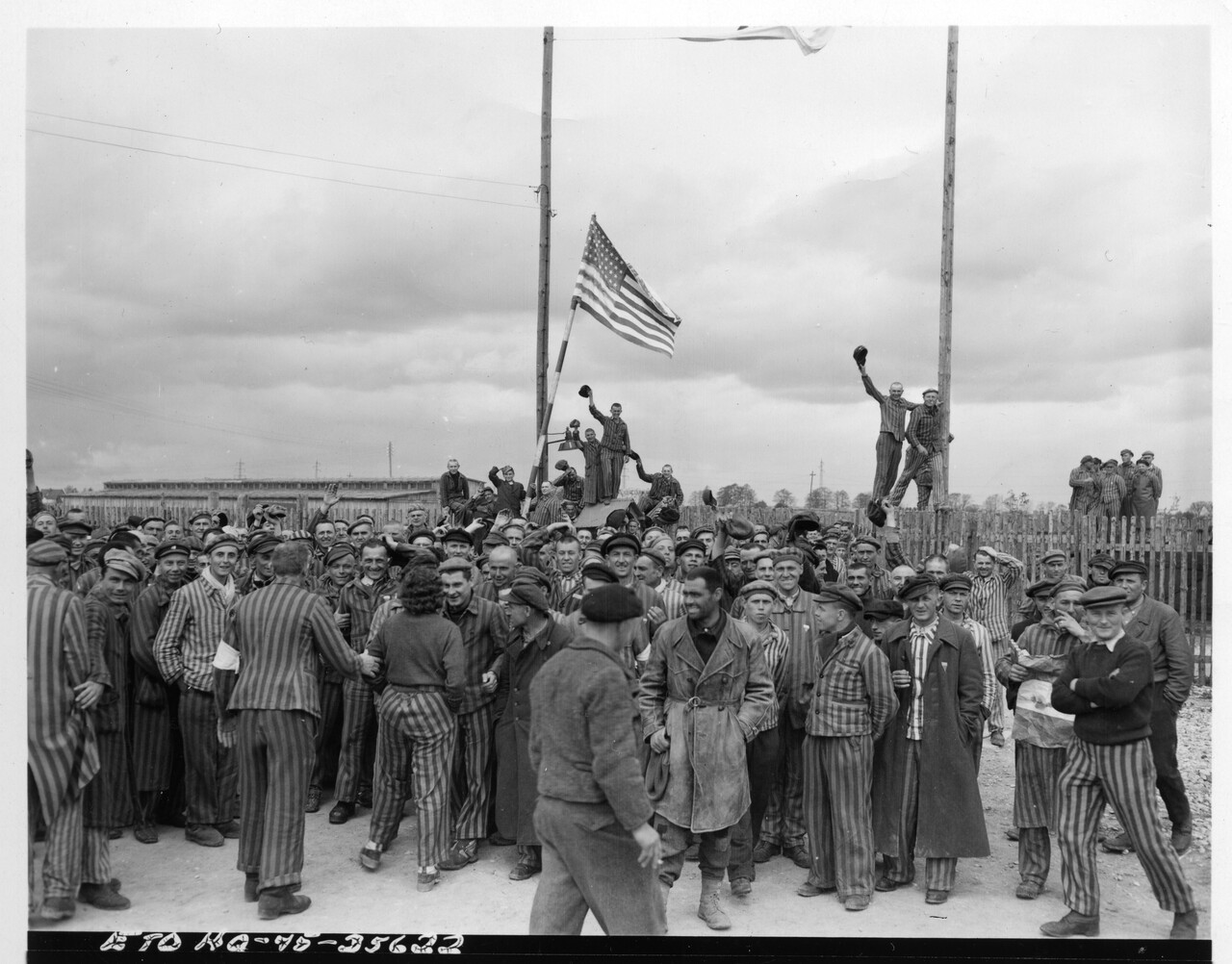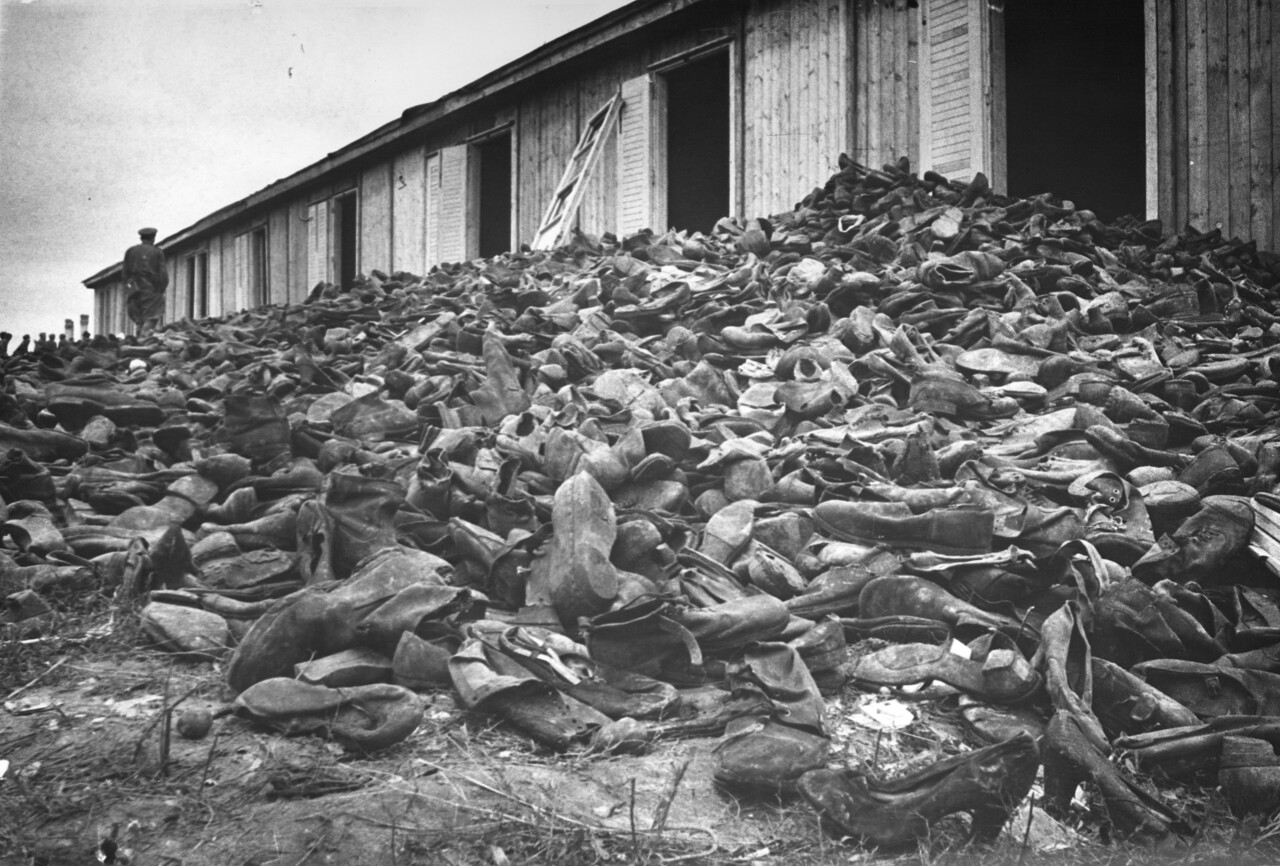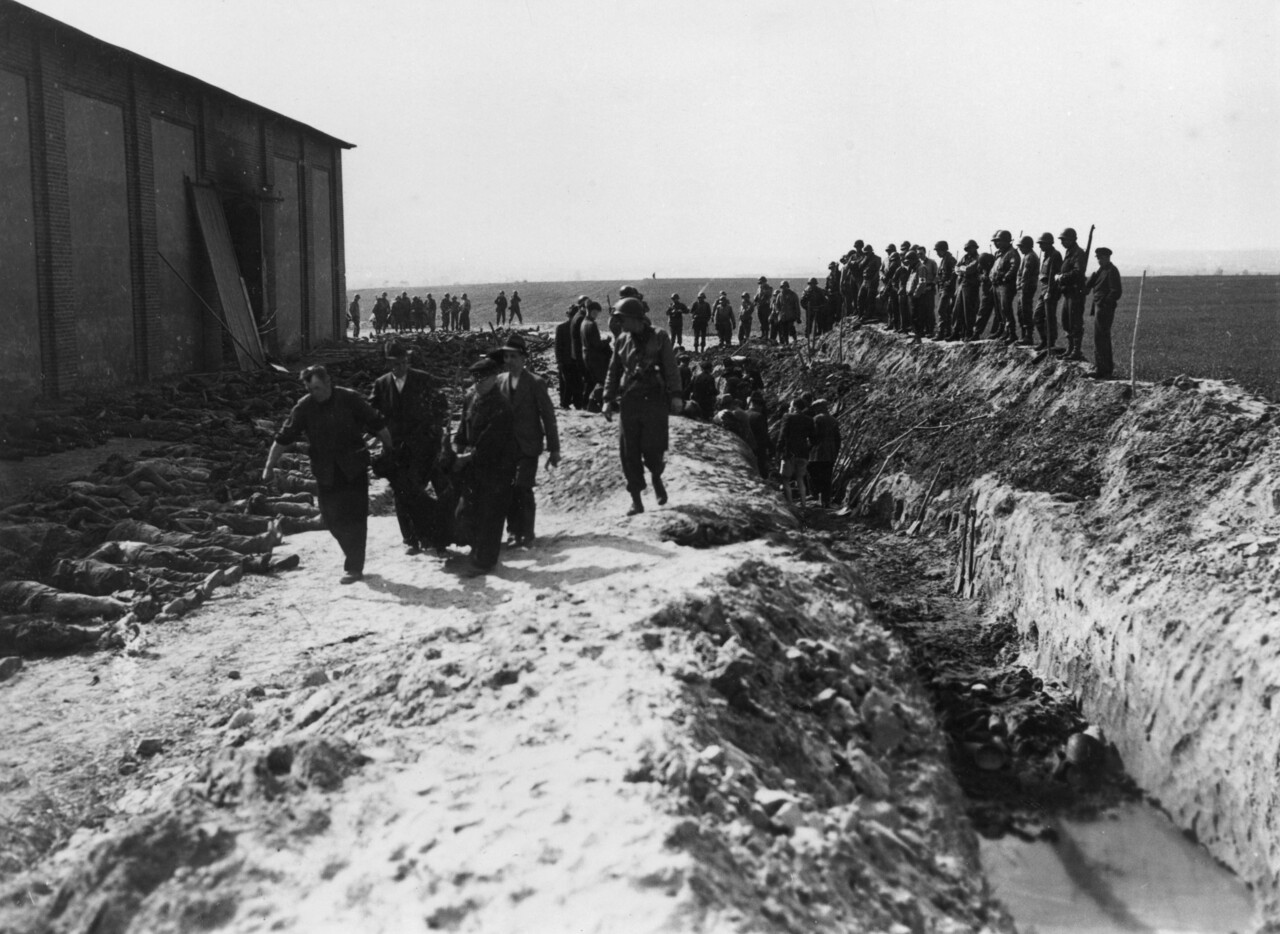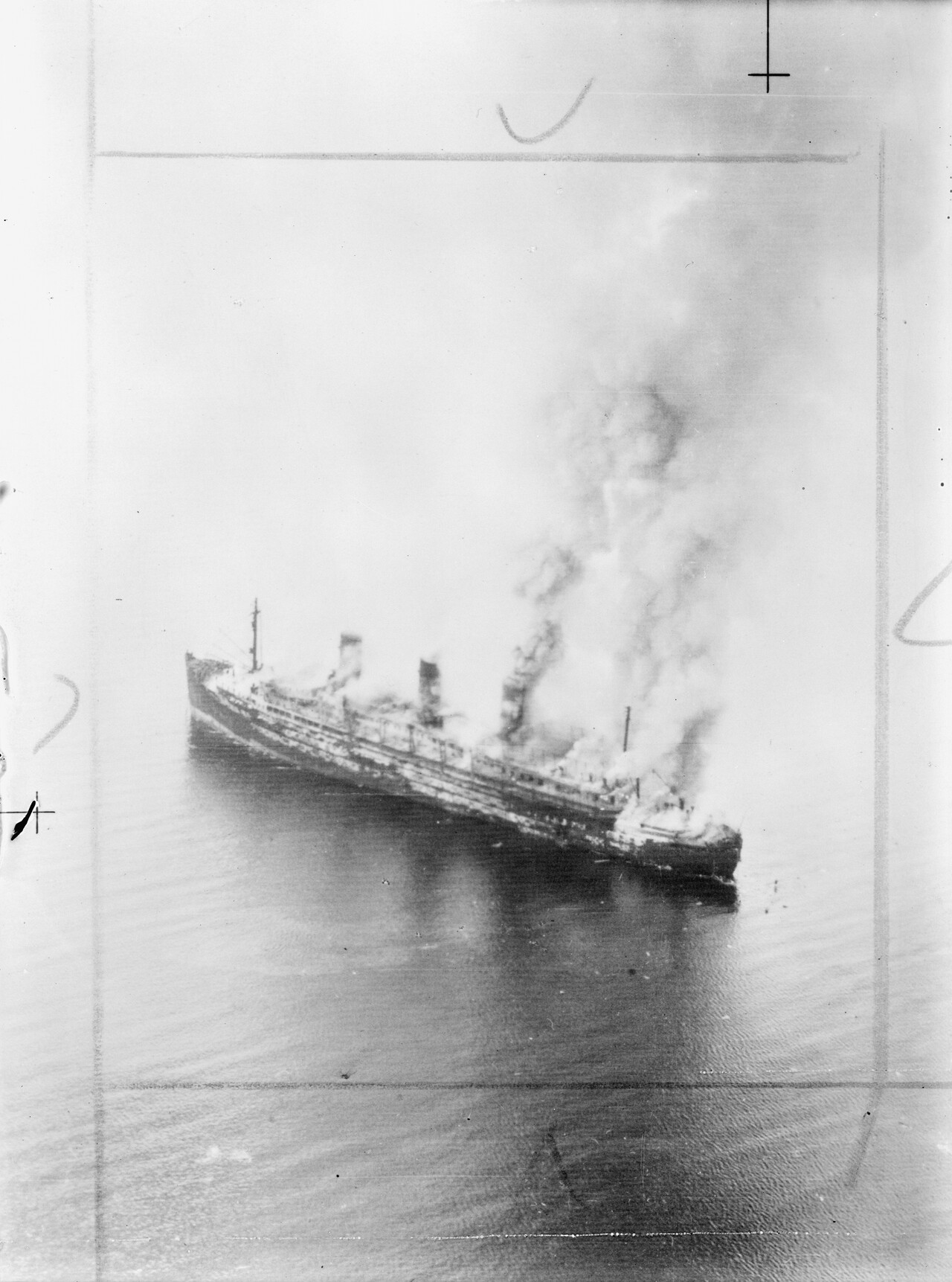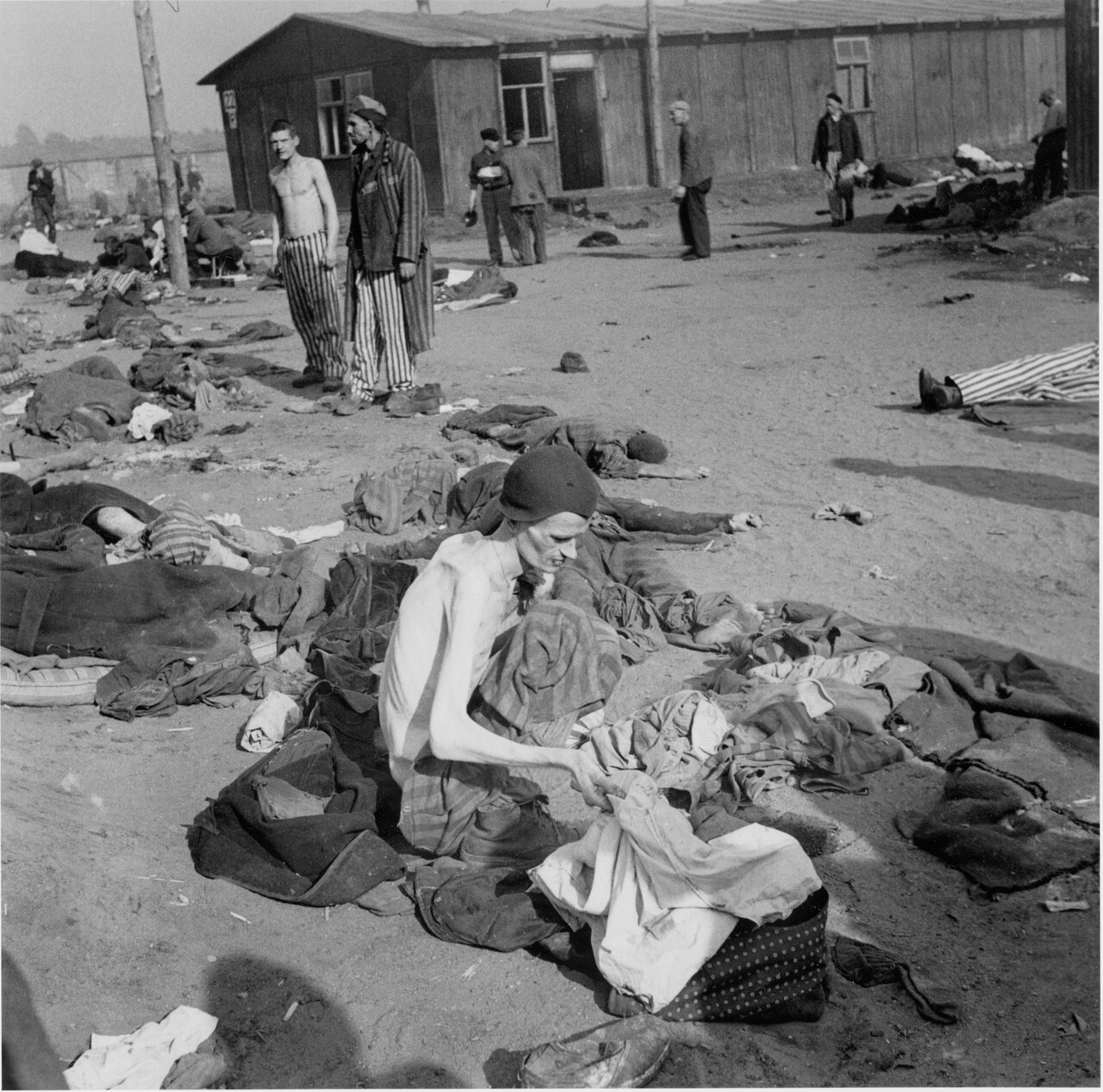Death Marches and Liberation of the Concentration Camps
In the summer of 1944, the SS began the liquidation of camps near the front and the transfer of tens of thousands of prisoners to other camps. The transports took place in overcrowded cattle cars, high-sided open wagons or on foot. Some of them lasted many weeks. By the end of the war, at least 140,000 people had died as a result of cold, hunger or exhaustion during these death marches. Prisoners who could no longer walk or run were executed by the SS. Some of the trains accidentally came under fire from Allied fighter planes or broke down en route. Individual death marches – such as at Palmnicken in East Prussia or Jamlitz in Brandenburg – ended in massacres. When the Allied liberators arrived in the spring of 1945, they were confronted with shocking images: In camps, some of which were overcrowded, prisoners – often »living corpses« – were left to fend for themselves after the guards fled. Supplies collapsed, epidemics spread and in some places vigilante justice was carried out against former prisoner functionaries. Many freed prisoners did not survive the first few days. Their deaths were the result of disease, malnutrition or the sudden ingestion of food after years of starvation.
Majdanek near Lublin, 23 July 1944: It is the first concentration and extermination camp to be liberated by the Red Army on Polish soil. Soldiers found piles of shoes belonging to murdered prisoners. It is estimated that about 78,000 people were killed in the camp.
Archiwum Akt Nowych, Photo correspondent: Mikhail Trakhman, D-5910
Gardelegen, 1945: Death marches of prisoners from several concentration camps arrive here in April. On 13 April, about 1,000 prisoners were herded into a barn. Two days later, 18-year-old Edward Antoniak testified: »The floor was covered with straw soaked in petrol. At 6 p. m. the straw was set on fire. Those who tried to get out were shot, and other refugees were torn to pieces by hand grenades.« After the American invasion, male residents over the age of 16 had to retrieve the dead with their bare hands and bury them in a newly built cemetery.
bpk, 30015815
Bergen-Belsen, after 15 April 1945: thousands of decomposing bodies lie on the site of the liberated camp, buried by British soldiers in mass graves to combat the outbreak of epidemics. Most of the 60,000 prisoners still alive were seriously ill or close to death from exhaustion.
Imperial War Museum, London, BU 3766
